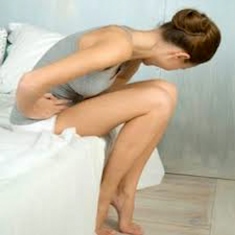
The Gallbladder is a tiny pear shaped organ of about 8cm. in size that lies under the liver and carries bile, removes water, and reduces the pH to less than 7, making it somewhat acidic. It is primary goal is always to assist together with the digestion of fats.
Gallbladder disorders are pretty common and rather frequently debilitating illnesses that may be life threatening and in many instances require operation. Yet since bile is in fact generated by the liver, the gallbladder isn't crucial for survival and removal of the organ need not always have a major adverse effect in your own life.
Reasons for Gallbladder disorder:
Gallbladder problems are often due to gallstones ( cholelithiasis ). A gallstone is composed of deposits of calcium and cholesterol bilirubate in inflammation. Rocks can occur when the Gallbladder has been pretty inactive for a period as in the existence of; pregnancy, diabetes, pancreatitis, celiac disease, obesity, cirrhosis, through using hormonal contraceptives or as a complication of operation.
Other Gallbladder ailments contain; Cholangitis that's an infection of the bile duct, Cholecystitis that is an inflammation generally due to impacted gallstones or bile duct stones, Choledochollithiasis and Cholesterolosis or crystal deposits.
Signs and Symptoms of Gallbladder Disorder:
Symptoms are absent, however a classic episode shows as severe upper stomach pain either continuous or irregular, that may radiate to the front of the torso, shoulders or the back. Episodes may be quite so intense the sufferer will visit the hospital for help and frequently come after greasy meals or at nighttime while sleeping.
Other symptoms include; constipation, indigestion, vomiting, belching, flatulence, bad breath, nausea, chills, discoloured jaundice, fever, stomach distension and stools.
Analysis of Gallbladder Disorder:
Gallbladder disorder can mimic specific other disorder including pancreatitis, peptic ulcers, heart attacks, angina, esophagitis, or cancer that is why analysis is vital. Echography, CT scans, ultrasound and x Rays are used to find gallstones. The analysis is supported by bilirubin and alkaline phosphatase levels. White blood cell amounts could be elevated, and serum amylase levels are used to distinguish gallbladder disorder from pancreatitis.
Treatment of Gallbladder Disorder:
Surgical removal of the gallbladder in the shape of, either open cholecystectomy or laparoscopic cholecystectomy is generally the treatment of alternative although if there are just a couple of rocks, electrohydraulic shock wave lithotripsy along with all the administration of ursodeoxycholic acid to help dissolve the rocks might be tried to fragment the rocks to allow them to pass through.
Guided endoscopy where there is a basket utilized to trap the rock and remove it through a catheter may also be tried if needed. In patients that are poor surgical risks Chenodeoxycholic acid to dissolve rocks is an option.
A diet comprising several small, low carbohydrate, high protein, low fat, non-hot meals a day is advised. Vitamin K supplementation is suggested.
Prognosis is generally great but it's not unusual to experience some postoperative symptoms including malady, nausea, diarrhea, heartburn and bloating. Pain relievers like Aspirin, Codeine and Powerstrips may be essential

